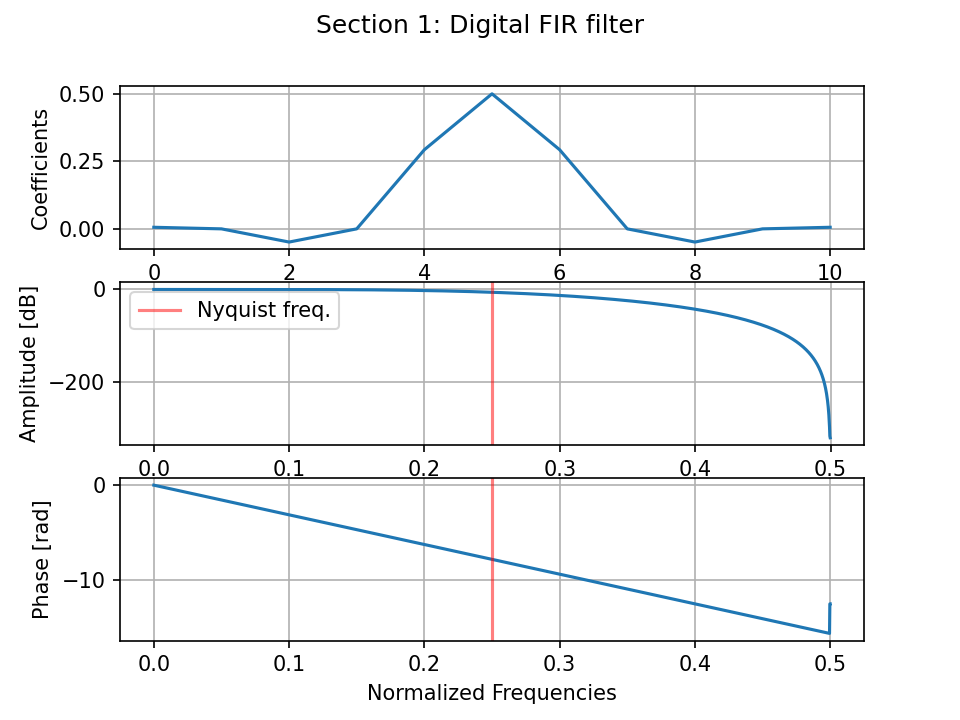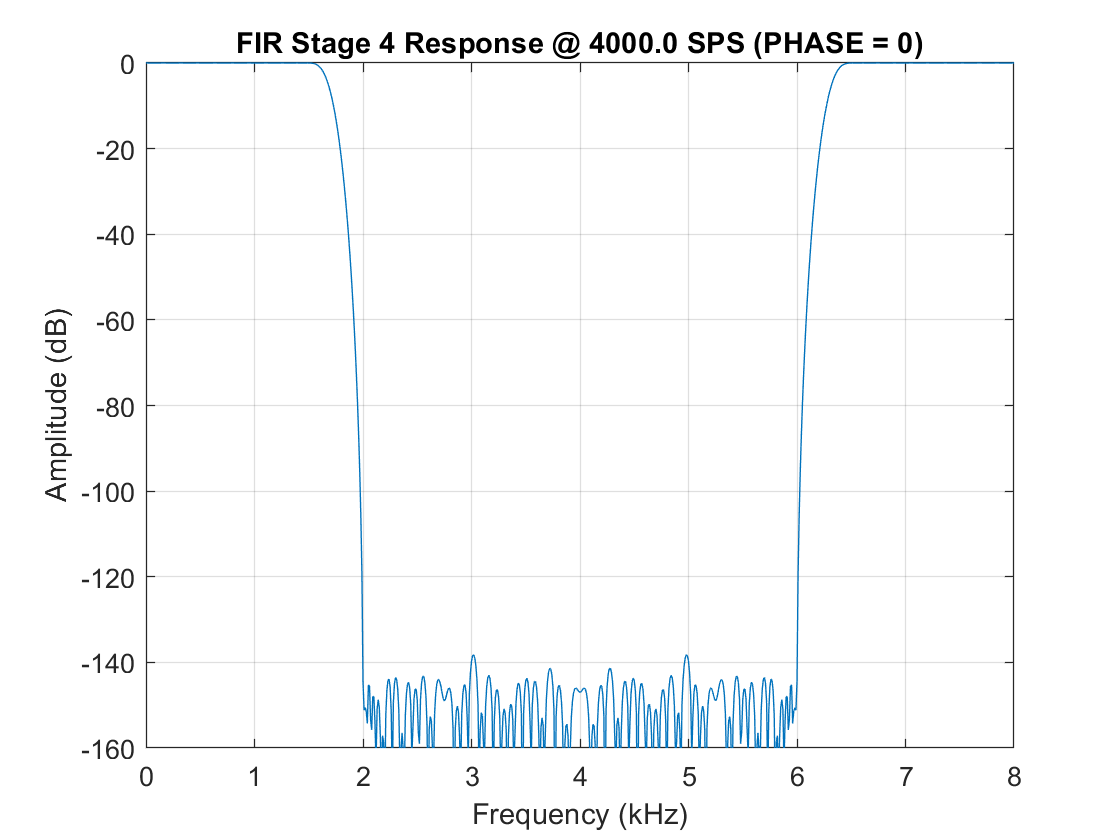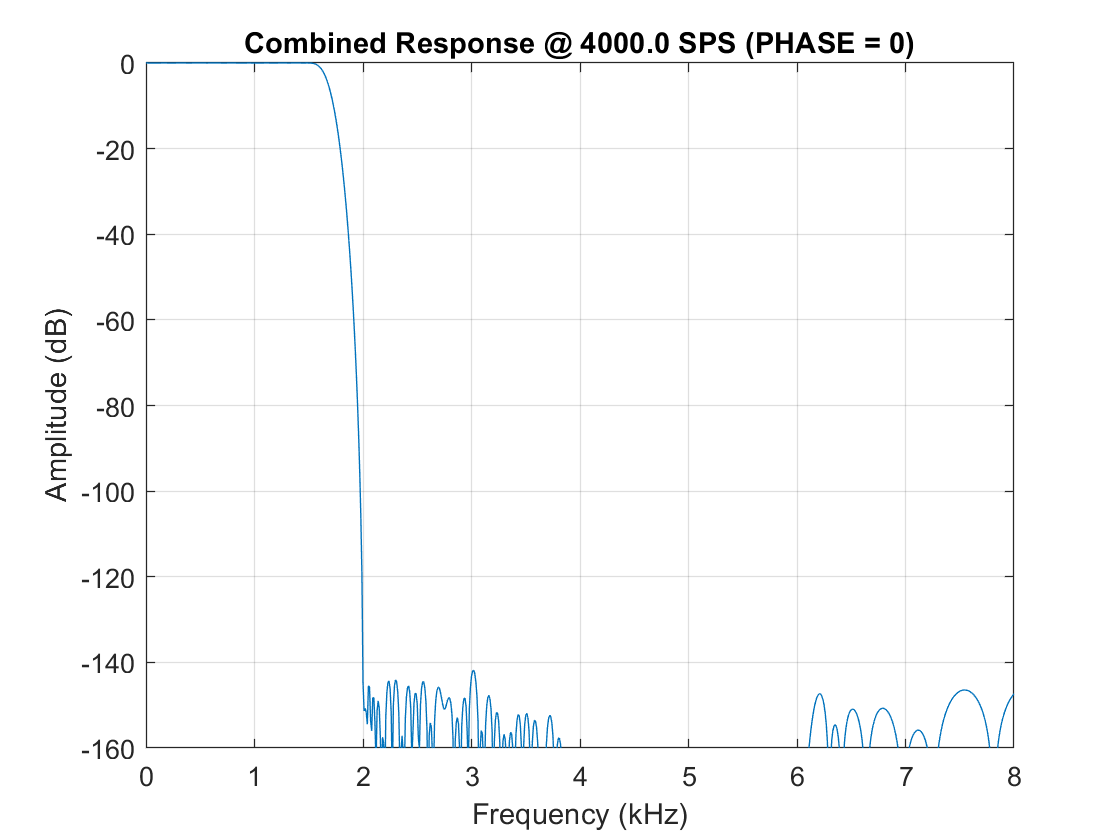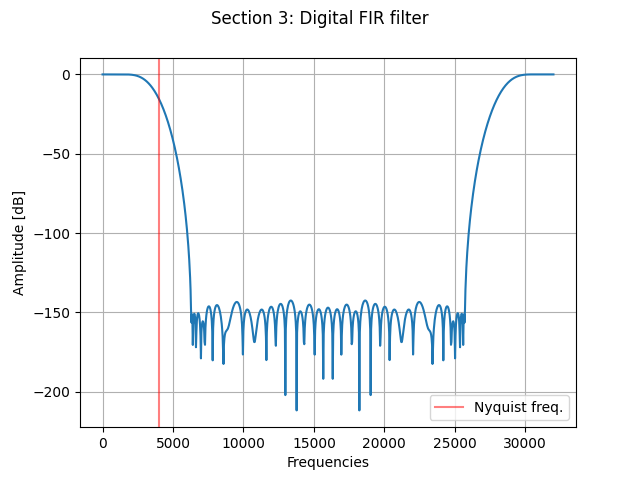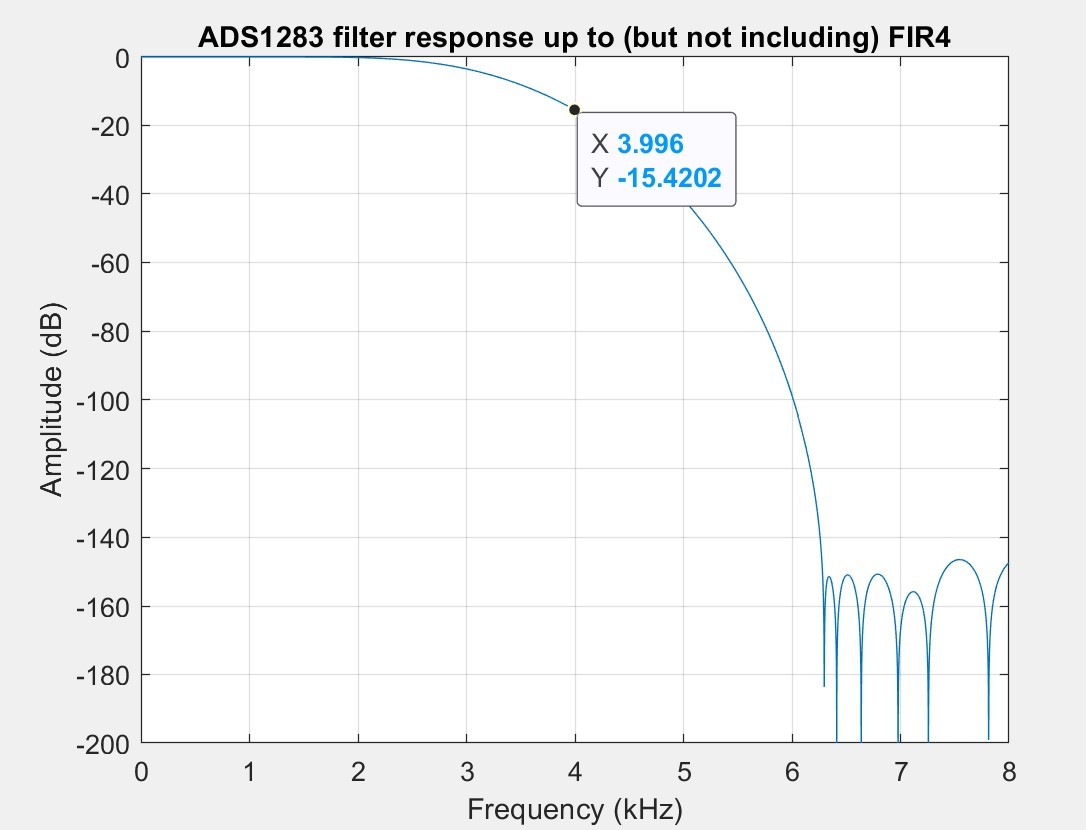Dear support team,
We bought a seismic acquisiton system using the ADS1283 and I was surprised by the phase delay applied by the FIR stages in data.
On section 3 and section 4 (linear phase) detailed in Table 9, the detailed FIR would have a symmetrical shape if some zeros (2x on section3 and 1x on section4) was'nt added at the end of the coefficients array. It doesn't bring anything on the amplitude but affects the phase delay, which is no more corresponding to the theory ( phase_delay = (N-1)/2 samples ). This is why my system is affected by this additional phase delay. Why did you designed it that way? Is there a practical reason? From my point of view, it brings nothing except more phase shift..
I also noticed about the coefficients that all sections except last one does not filter all frequencies below Nyquist frequency. It seems to me a big twist on Nyquist theorem. So my second question is almost the same: is there any good reason to design your filters such a way?
I included below the fft plot of section 1 (decimation factor 2, so should filter below 0.25)
Thanks a lot for your support.
Max


